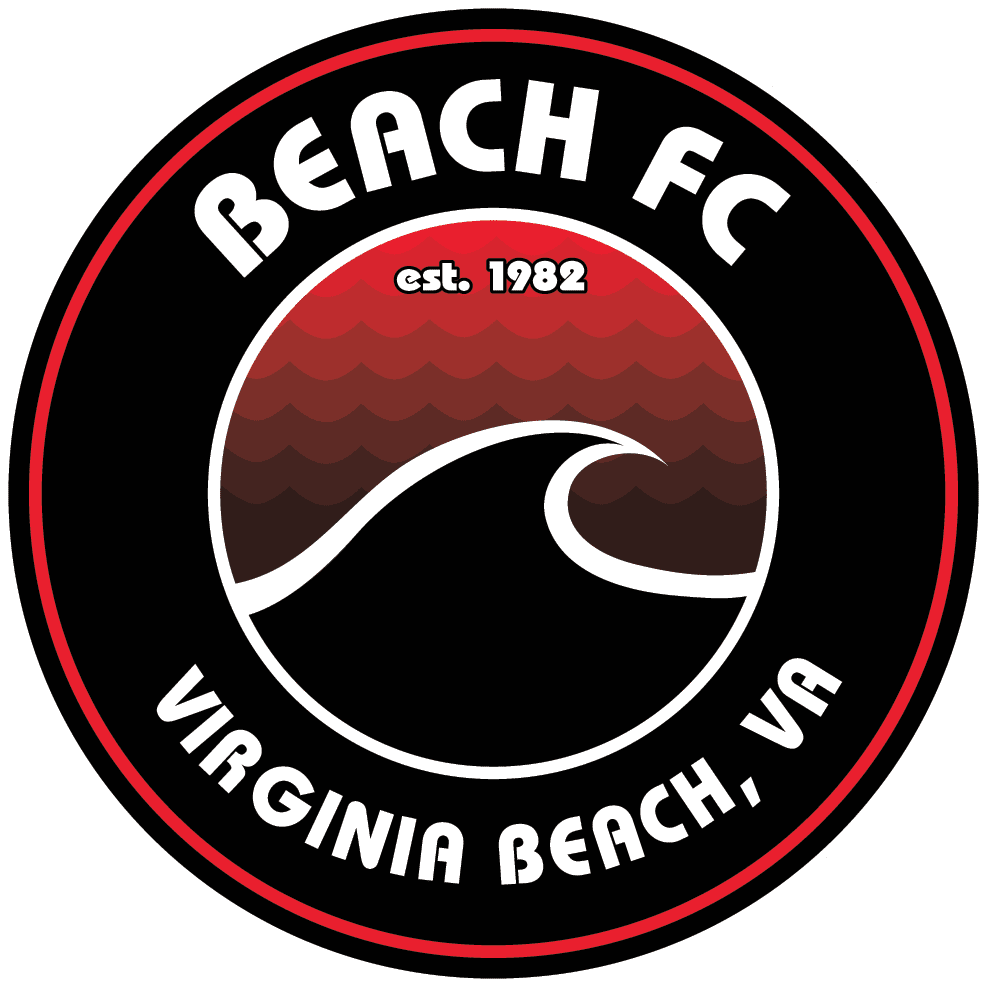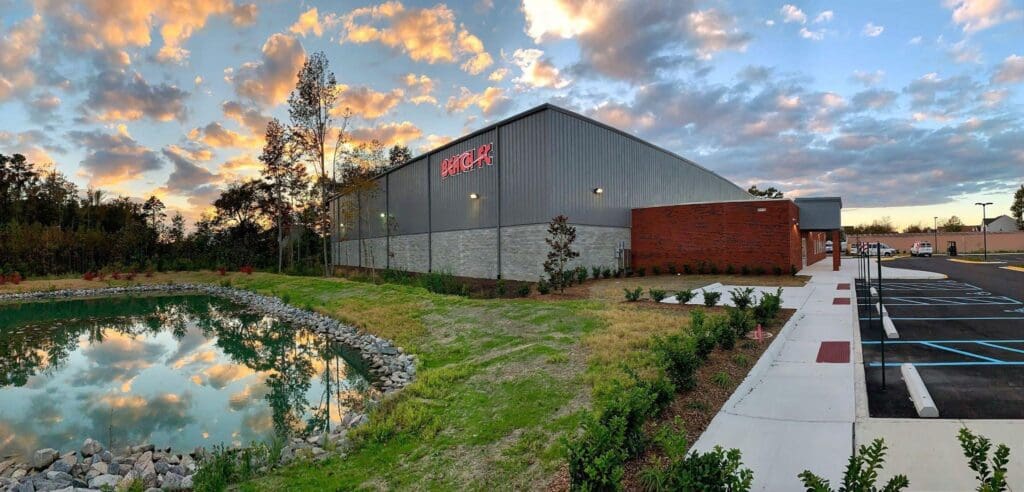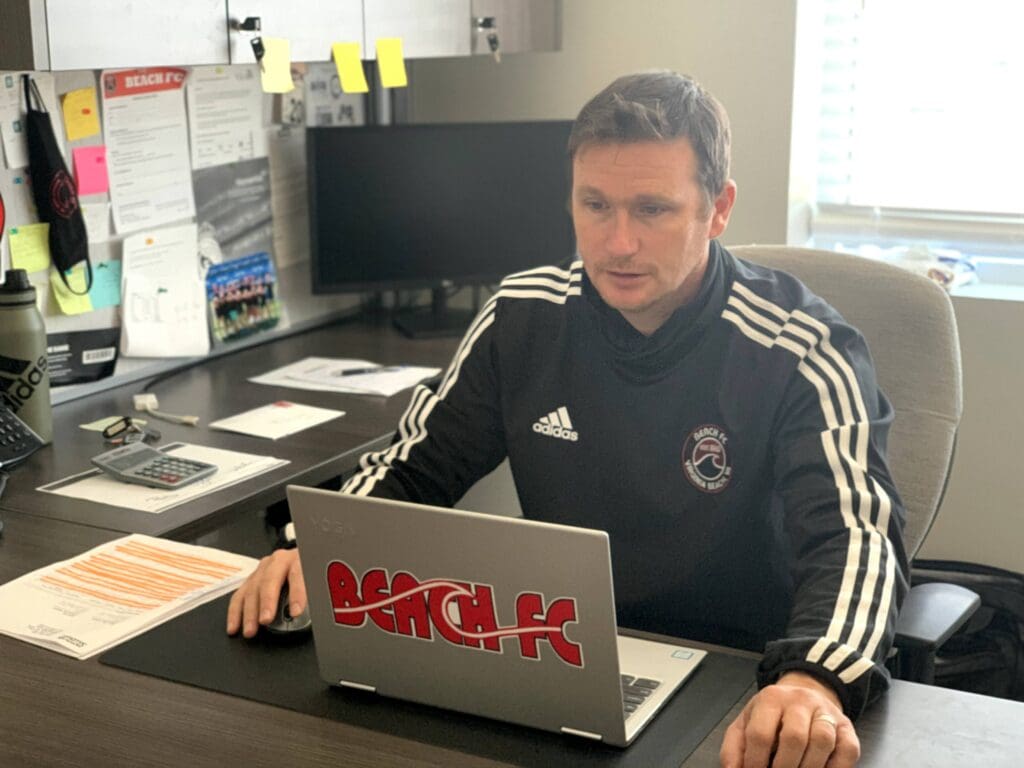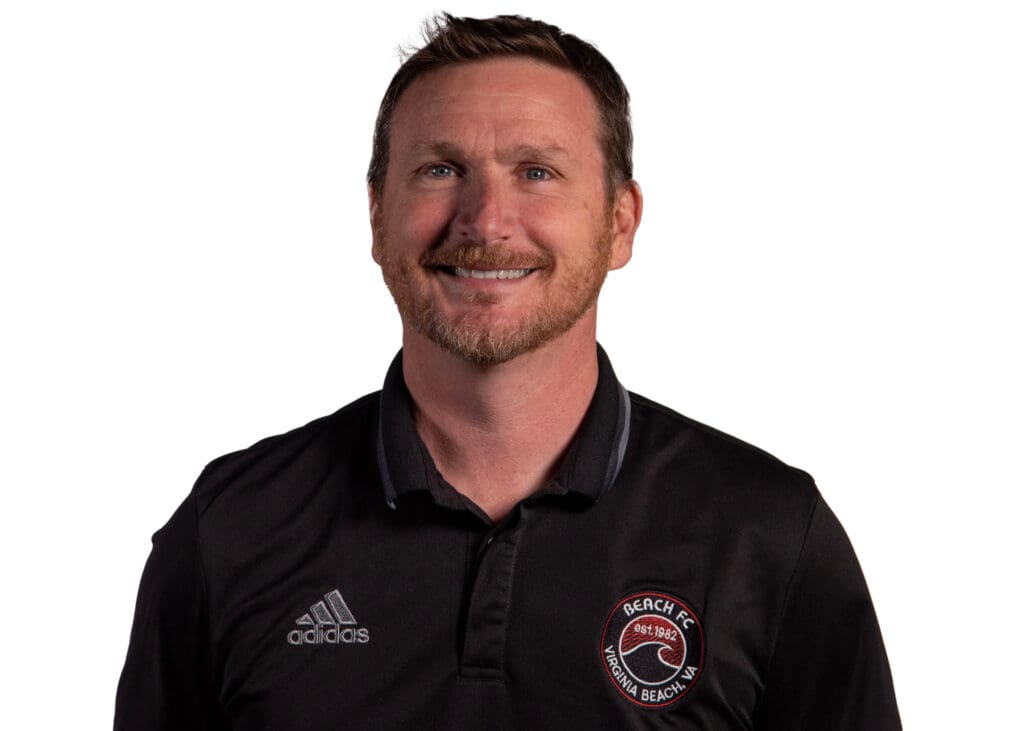The Art of Boardroom Politics
The relationship between a Youth Sports Club’s professional staff and its volunteer Board in a nonprofit is often complex. The Executive Director, the organization’s top staff member needs considerable skill to develop a strong partnership with the Board, based on trust, balance and strategic collaboration. In this ‘Best Practice in Youth Sports’ article, Steve Danbusky, Executive Director of Beach FC, shares his 16-year evolution from Coaching Director to organizational leader. We highlight the importance of Board relationships, planning, and dynamic leadership. Managing 4,200 athletes and $3.5 million in revenue, his story provides invaluable lessons for Executive Directors striving to lead with clarity and confidence.

From the Field to the Boardroom
Steve Danbusky’s journey from Beach FC’s Director of Coaching to its Executive Director is both inspiring and instructive. Starting his leadership role 16 years ago, Steve transitioned from technical duties to administrative responsibilities at a pivotal time. The previous Executive Director’s departure coincided with Steve’s desire for a more family-oriented work schedule—a moment of good timing that reshaped his career trajectory.
This transition, however, was not without its challenges. Steve candidly acknowledges the vulnerability of his early years in the role and the critical support he received from experienced business leaders on the Board of Directors. This humility laid the foundation for his collaborative approach, which has become a hallmark of his leadership.
Trusting the Process: Board-Executive Dynamics
Navigating the relationship between an Executive Director and a volunteer Board of Directors is a delicate art. Steve credits his success to an early emphasis on building trust and mutual respect with his Board. Recognizing their dual roles as advocates and overseers, Steve prioritized transparent communication and regular engagement.
Monthly coffee meetings with key decision-makers and onboarding lunches for prospective Board Members creates a culture of open dialogue. By establishing a clear understanding of the club’s history, direction, and challenges, Steve has collaborated with the Directors to evolve the Board’s role to one of support, advise and consultancy.




Building the Right Board
A strong Board is the foundation of any successful nonprofit. It’s essential to recognize the Board as more than just advisors—they hold ultimate authority, including hiring and firing the Executive Director. Steve emphasizes the value of retaining and recruiting Board Members with expertise in critical areas like finance, law, and nonprofit governance, skills that are often beyond the scope of staff roles.
Flexible Board Composition
Steve offers a great tip for Board composition – instead of a fixed number of Board Members, update the bylaws to include a range. For example, Beach FC’s range is 7 to 13 Members and the current number of serving Members is 11. This approach offers several advantages. It eliminates pressure to immediately replace a departing board member, allowing thoughtful consideration of the role’s needs. It also enables the board to assess if adding a new member is necessary and adds or detracts from the club’s success.
Steve champions the use of short-term committees to involve volunteers without overburdening the Board. Committees for staff compensation, grievance resolution, or facility development offer targeted support, allowing the Board to focus on strategy and governance.
Strategic Adaptability
Since has appointment as Executive Director, the role and responsibilities of the Board have changed. Initially focused on operational oversight, the Board has shifted toward strategic planning and supporting staff-driven initiatives. This shift reflects the growing complexity for a club managing 4,200 athletes and multimillion-dollar revenue streams.
Steve’s tip to Executive Directors. Work with the Board President to mitigate against a threat of large-scale turnover, by reviewing and amending bylaws. It is important to protect the organization from potential conflicts, such as disgruntled Members attempting to influence Board elections or decisions.
Board Members Code of Conduct
A few years ago, Beach FC introduced a Board Member Code of Conduct, extending its commitment to professionalism across all levels of the club. This initiative complements similar codes already in place for coaches, players, and parents, ensuring that the leadership group upholds the highest standards of behavior and accountability. By setting clear expectations and promoting mutual accountability, the code fosters a culture of integrity and unity, ultimately enhancing the club’s overall governance and decision-making processes.
Lessons in Relationship Management
Effective leadership often hinges on managing relationships. Steve views politicking as a necessary skill for Executive Directors. Knowing when to engage individual Board Members versus the entire Board is critical for addressing concerns efficiently. Steve utilizes a shared Google document tracking potential Board candidates. This tool ensures succession planning is always underway, aligning the Board’s expertise with the club’s evolving priorities.
Key Recommendations for Executive Directors
Steve’s experience at Beach FC offers actionable insights for nonprofit leaders seeking a productive relationship with their Boards:
- Prioritize Trust and Transparency
Establish open communication channels and regular touchpoints with Board Members to build mutual trust. - Recruit Expertise Strategically
Work with the Board to identify and recruit Members with skills aligned to the club’s current and future needs, such as finance or law. - Review and Amend Bylaws
Collaborate with the Board to ensure bylaws provide clarity and protections for all stakeholders. - Leverage Committees
Use short-term committees to expand volunteer involvement without overburdening the Board. - Develop Succession Plans
Maintain a pipeline of qualified Board candidates to ensure seamless transitions and long-term stability.
About Steve Danbusky
Steve Danbusky is a seasoned soccer professional with a rich background as both a player and coach. A former USL League player with the Long Island Rough Riders and Virginia Beach Mariners, Steve transitioned into coaching, starting as an assistant coach at Western New England College. He joined Beach FC in 2003, quickly advancing to Boys Director of Coaching in 2004, and becoming Executive Director in 2009. An A-licensed coach, Steve also contributed to the Virginia Youth Soccer Association’s Olympic Development Program as a coach and educator. His leadership extends to serving on several boards of directors for local leagues and facilities, reflecting his deep commitment to youth soccer development.


